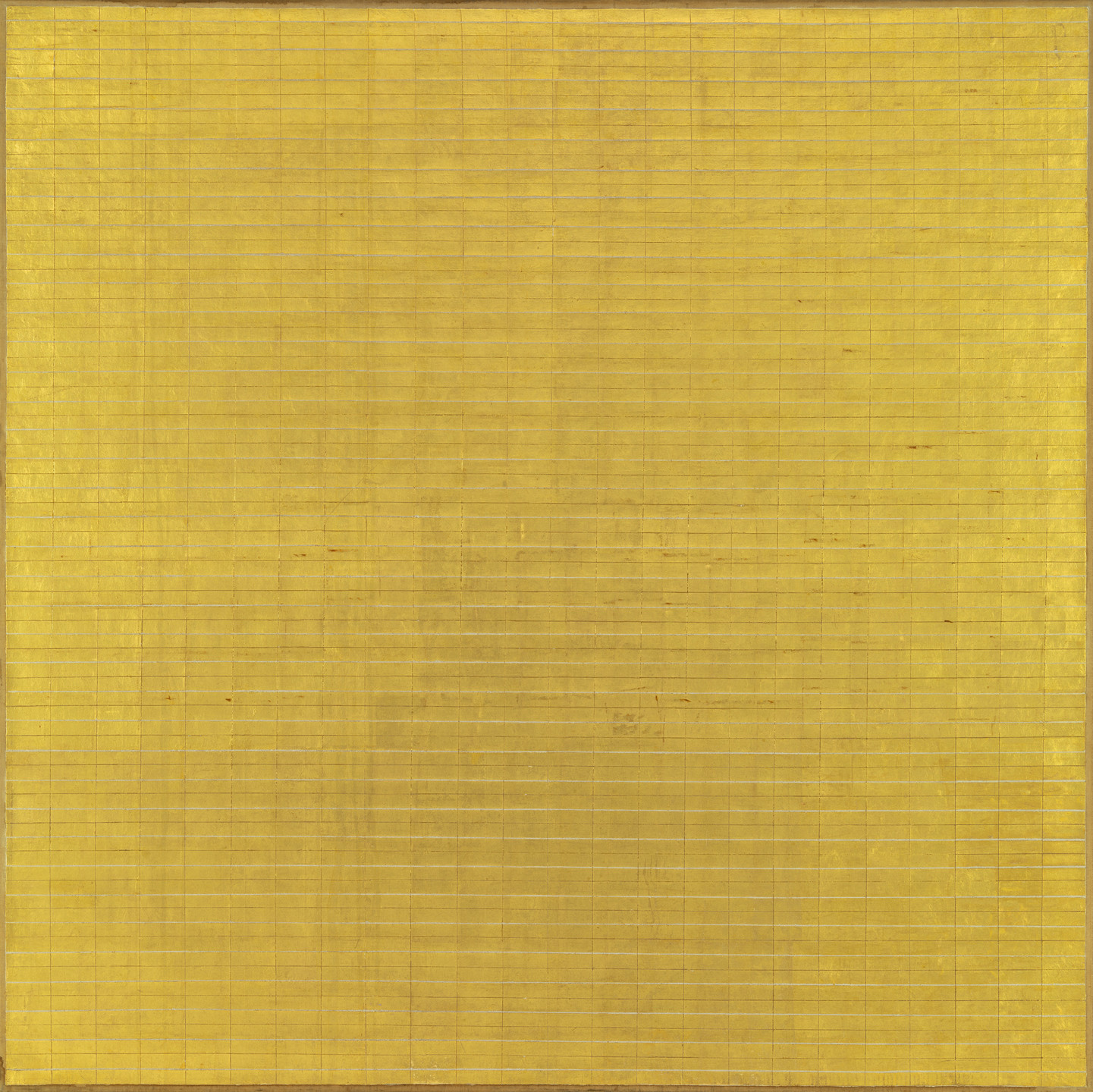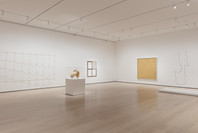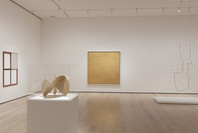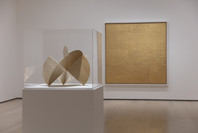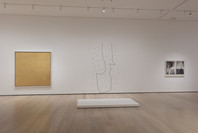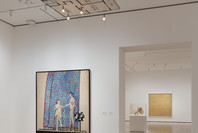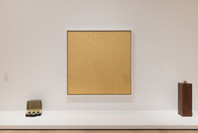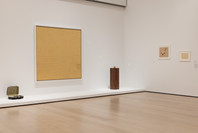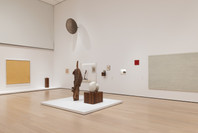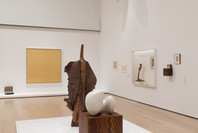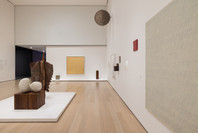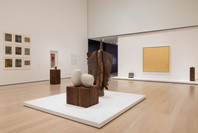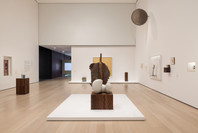For Friendship, Martin covered an underlayer of oil paint with a thin layer of goldleaf, which she then scored by hand to reveal the ground beneath. Gold, with its connotations of luxury and opulence, was an unusual choice for the artist, who once said that to paint was “to accept the necessity of the simple, going into a field of vision as you would cross an empty beach to look at the ocean.” Though Martin’s trademark format of a six-by-six-foot gridded canvas links her practice to the serial repetition and geometric forms of Minimalism, the use of goldleaf evokes the religious tradition of Christian icon painting. Indeed, Martin often drew on spiritual ideas, particularly those found in Taoism, Zen Buddhism, and American Transcendentalism, in her work. Here, the luminous quality of the work’s textured surface suggests, in the artist’s words, “a world without objects, without interruption.”
Gallery label from Artist’s Choice: Grace Wales Bonner—Spirit Movers, November 18, 2023 – April 07, 2024
Spanning just over six feet on each side, Friendship is one of three paintings Martin made with gold leaf and gesso, materials rich with historical associations that stand out in an era defined by commercial images and industrial production. Though the painting’s lavish gold-leaf medium is unique within Martin’s body of work, its format—a square canvas, covered from edge to edge with a meticulous grid—had become the painter’s hallmark by the early 1960s. Martin would continue to explore this abstract geometric language throughout her long career, initially in New York and later in Taos, New Mexico, where she settled in 1968.
Though she often showed with other New York abstractionists, Martin charted new terrain outside both the broad gestural vocabulary of Abstract Expressionism and the systematic repetitions of Minimalism. Her practice was tethered to spirituality and drew from a mix of ideas stemming from Zen Buddhism and American Transcendentalism, a nineteenth-century movement that emphasized the power of individuality and the importance of nature. Painting is “a world without objects, without interruption . . . or obstacle,” Martin said. “It is to accept the necessity of . . . going into a field of vision as you would cross an empty beach to look at the ocean.”
Publication excerpt from MoMA Highlights: 375 Works from The Museum of Modern Art, New York (New York: The Museum of Modern Art, 2019)
